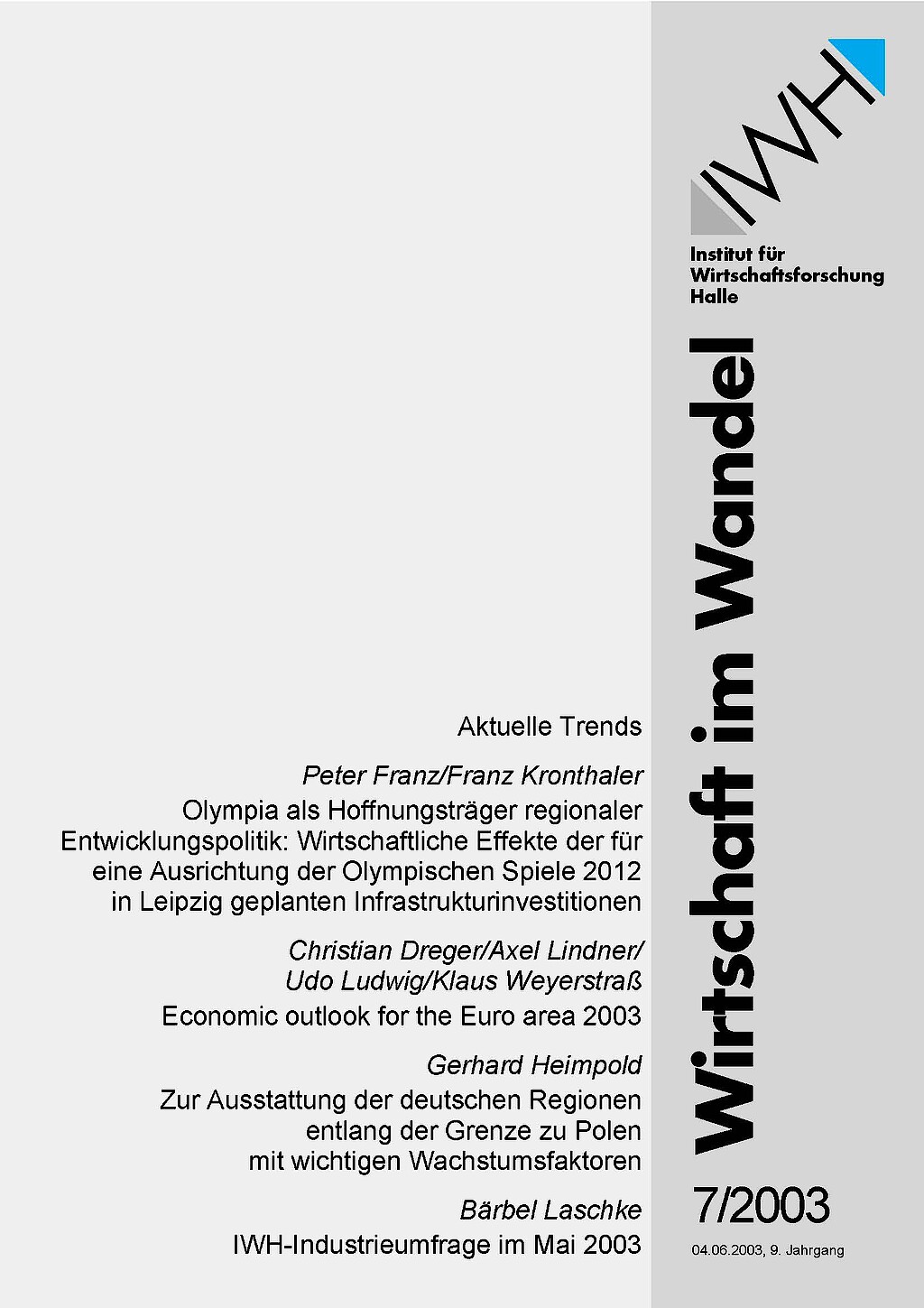
On the presence of important growth factors in German regions along the border with Poland
Die deutschen Regionen entlang der Grenze zu Polen gelten als wirtschaftlich schwach. Über deren künftige wirtschaftliche Entwicklung besteht – nicht zuletzt angesichts der bevorstehenden EU-Osterweiterung – große Unsicherheit. Vor diesem Hintergrund versucht der Beitrag, mehr Licht in die Debatte über die Zukunft der Grenzregionen zu bringen. Die Untersuchungsergebnisse zeigen zweierlei. Erstens ist der Grenzraum kein homogener Raum. Einzelne Teilräume weisen durchaus Stärken auf: die Universitätsstädte – erwartungsgemäß – beim Humankapital und beim Dienstleistungsbesatz. Andere Kreise zeichnen sich durch einen hohen Industriebeschäftigtenanteil und durch überdurchschnittliche Industrieinvestitionen aus. Zweitens sind zwar die Grenzregionen bei der Ausstattung mit wichtigen Wachstumsdeterminanten im Durchschnitt etwas schlechter als Ostdeutschland als Ganzes gestellt. Dies trifft aber auch auf viele andere strukturschwache Regionen in Ostdeutschland zu. Gravierender als die intra-ostdeutschen Unterschiede fallen die Unterschiede im Vergleich zu den alten Ländern aus.




